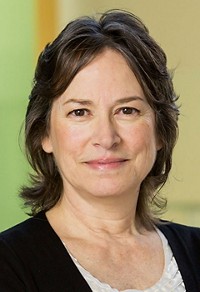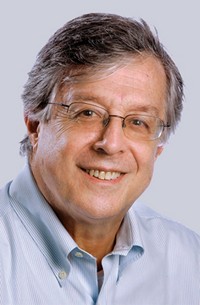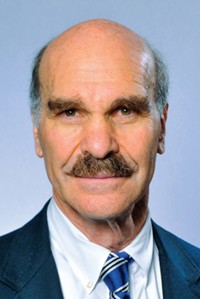Advertisement
Grab your lab coat. Let's get started
Welcome!
Welcome!
Create an account below to get 6 C&EN articles per month, receive newsletters and more - all free.
It seems this is your first time logging in online. Please enter the following information to continue.
As an ACS member you automatically get access to this site. All we need is few more details to create your reading experience.
Not you? Sign in with a different account.
Not you? Sign in with a different account.
ERROR 1
ERROR 1
ERROR 2
ERROR 2
ERROR 2
ERROR 2
ERROR 2
Password and Confirm password must match.
If you have an ACS member number, please enter it here so we can link this account to your membership. (optional)
ERROR 2
ACS values your privacy. By submitting your information, you are gaining access to C&EN and subscribing to our weekly newsletter. We use the information you provide to make your reading experience better, and we will never sell your data to third party members.
People
ACS Award for Computers in Chemical & Pharmaceutical Research
January 15, 2007
| A version of this story appeared in
Volume 85, Issue 3
Sponsored by Accelrys
Emily Ann Carter is an acknowledged pioneer in the development and application of computational chemistry methods within the fields of surface and materials science. Among her significant contributions to theoretical methodology in computer modeling are the development of tools for sampling rare events in dynamics, the merger of ab initio quantum chemistry with molecular dynamics and kinetic Monte Carlo methods, and quantum-based multiscale materials simulations. She is credited with developing and applying quantum-mechanics-based methods to understanding and controlling the behavior of molecules, metals, ceramics, and semiconductor crystals, surfaces, and interfaces.
Those who know Carter describe her as a chemist, foremost, whose work with computers brings the discipline of chemistry to bear on problems traditionally dealt with by engineers and physicists. With the tools of computational chemistry, Carter's work puts her in the vanguard of multidisciplinary research, a trend impacting both the life sciences and materials science worlds and one in which Carter sees chemistry making a unique contribution.
Carter, 46, graduated with a B.S. in chemistry from the University of California, Berkeley, in 1982 and received her Ph.D. in chemistry from California Institute of Technology in 1987. At Caltech, she studied under William A. Goddard III, the 1988 recipient of the Award for Computers in Chemical & Pharmaceutical Research. After postdoctoral work with James T. (Casey) Hynes at the University of Colorado, Carter joined the faculty at UCLA. There, she rose to the rank of professor of physical chemistry and materials science and director of modeling and simulation at the California Nanosystems Institute at UCLA. Carter is currently a professor of mechanical and aerospace engineering and applied and computational mathematics at Princeton University.
Carter says she was influenced in her decision to pursue theoretical research by Goddard's work. His work in the area of catalysis, she says, showed her a direct, practical connection between theoretical and experimental research. "I saw that one could develop and use computational tools that have the accuracy required to make predictions that not only can explain experimental observations but also help design the next set of measurements," she says.
Pursuing computational applications related to surface chemistry, Carter achieved breakthroughs that include the use of quantum mechanics (coupled with dynamics and kinetics) to elucidate the mechanisms involved in etching and growth of silicon, to connect the atomic-scale nature of cracks in ceramics and metals to their macroscopic mechanical properties, and to provide a new view of the nature of bonding at metal-ceramic interfaces.
This materials research also has a bearing on her earlier work on heterogeneous catalysis. Carter and Emily Jarvis, a research chemist at the National Insitute of Standards & Technology and one of her former Ph.D. students at UCLA, have a patent pending on a thermally resistant catalyst technology with automotive catalyst applications.
Goddard says that Carter's background in organometallic research as an undergrad with Robert G. Bergman and Andrew Streitwieser at UC Berkeley equipped her with "a good intuitive grasp of reaction mechanisms in organometallic reactions," which he considers the best systems to learn from. She has applied this know-how to problem-solving via computational methods, which has advanced chemistry in materials research, he says.
Carter sees a mix of scientific disciplines as essential to her research. "People are working on increasingly complex problems," she says. "I think the future will involve many computational tools from a variety of science disciplines-physics, pharma, chemistry, engineering, mathematics, and statistics. As a result, the interpretation and design of experiments in many fields will be empowered more and more by computational chemistry in this broader sense."
The award address will be delivered before the Division of Computers in Chemistry.






Join the conversation
Contact the reporter
Submit a Letter to the Editor for publication
Engage with us on Twitter